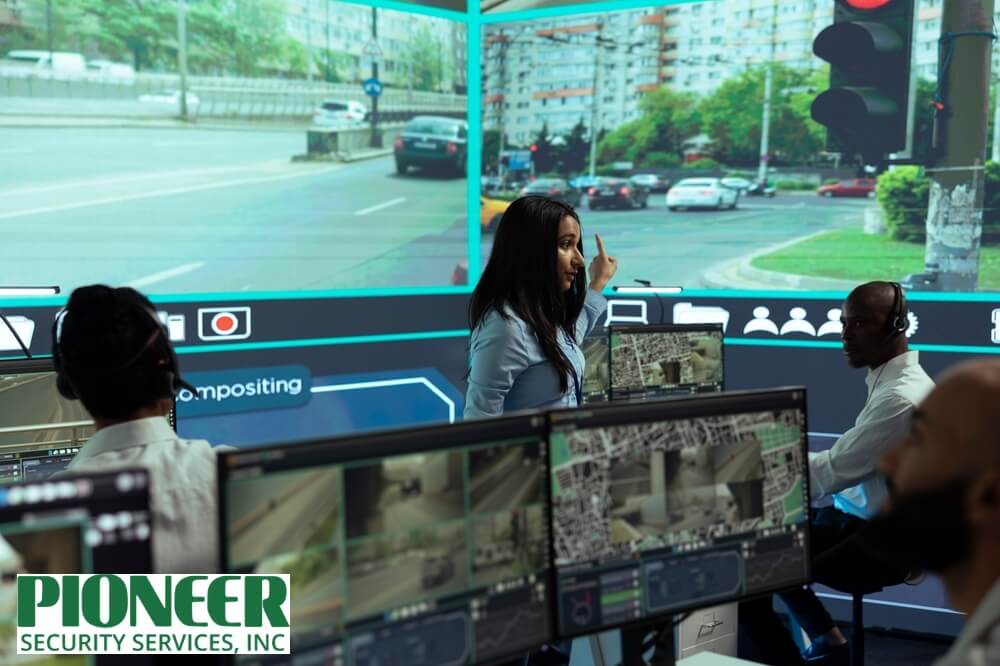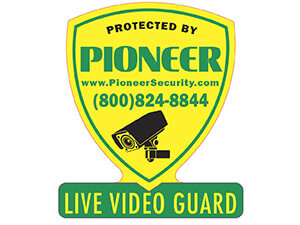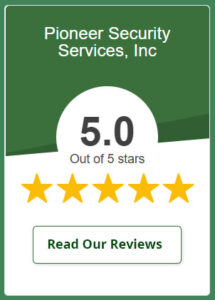Live video monitoring refers to the real-time surveillance of property via security cameras or video feeds, where a professional service watches, analyses alerts (often using AI), and responds accordingly. Pricing depends heavily on the property type (home, small business, or large facility), risk level (crime rate, location, and hours of vulnerability), features (number of cameras, video quality, analytics, and alarm verification), and the service provider.
For example, remote video monitoring services often cost $30 to $150 per month per camera, or around $65/month per camera for simpler setups. For high-risk or high-activity sites, costs can run much higher.
According to the Security Budget Benchmark Report, companies globally spend an average of 13.2% of their IT budgets on cybersecurity, which indirectly underscores the significant and costly nature of protecting assets and operations.
Read this blog to explore the full breakdown of costs, features, and best practices for choosing the right monitoring solution.
What Is Live Video Monitoring and Why Does the Cost Vary?
Live video monitoring refers to the process of continuously monitoring surveillance cameras in real-time, typically by operators in a remote monitoring center. Alerts or suspicious events trigger responses, which may include notifying law enforcement, sounding alarms, or dispatching a guard.
Cost varies because of several critical factors:
- Property size: A small home uses fewer cameras, less wiring, and bandwidth. Large commercial sites often require multiple cameras, which are frequently spread out.
- Number of cameras: The more cameras, the more hardware and increased monitoring time are required.
- AI/analytics features: Features such as facial recognition, license plate reading, motion analysis, or object detection add cost.
- Industry risk level: Properties in high-crime areas or sensitive facilities (such as banks, data centers, and warehouses) require higher security SLAs (service level agreements), resulting in a higher price.
- Provider services: Some services include 24/7 live operators, alarm response verification, integration with access controls or alarms; others are more basic.
According to industry providers, the average cost for remote video monitoring services typically ranges from $100 to $500 per month, depending on the number of cameras, site risk level, and features included.
Residential vs Commercial Monitoring Costs
Typical cost ranges differ substantially between residential and commercial setups. Below are examples illustrating this gap.
Residential systems often cost $30–$80/month for live video monitoring. These are home-equipped with a few cameras, basic video quality, and usually lack sophisticated AAI capabilities at the top level.
In contrast, commercial properties generally pay $100–$500+/month, sometimes much more. For example, a business with multiple cameras, high-definition streams, video analytics, alarm verification, and constant operator monitoring will fall at the upper end.
Examples:
- A small retail shop using 4-6 cameras with basic night vision and motion detection might pay around $120-$200/month.
- A warehouse or multi-site business requiring license plate recognition, pan-tilt-zoom (PTZ) cameras, and integration with access control may pay $ 400-$600 per month, depending on the scale.
Factors That Influence Monitoring Prices
Here are the main factors that influence how much you’ll pay, with some explanation:
- Property size: Larger properties require more cameras, longer cable runs, increased network bandwidth, and additional infrastructure.
- Camera quality: Higher-resolution cameras (1080p, 4K), infrared or low-light performance, weatherproofing, PTZ controls, and other features are more expensive.
- AI/analytics features, such as license plate recognition, facial detection/recognition, motion analytics, and object detection, each add costs in licensing, processing power, and sometimes monthly fees.
- Response time SLAs: If the provider promises speedy response times (e.g., verifying alarms within seconds, dispatching), costs are higher. 24/7 monitoring vs business-hours only, likewise.
Integration with alarms/access control: If the video monitoring system needs to integrate with existing alarm systems, door access systems, or other security layers, there are associated integration costs, additional hardware/software requirements, and maintenance responsibilities.
Average Monthly and Yearly Cost of Live Video Monitoring
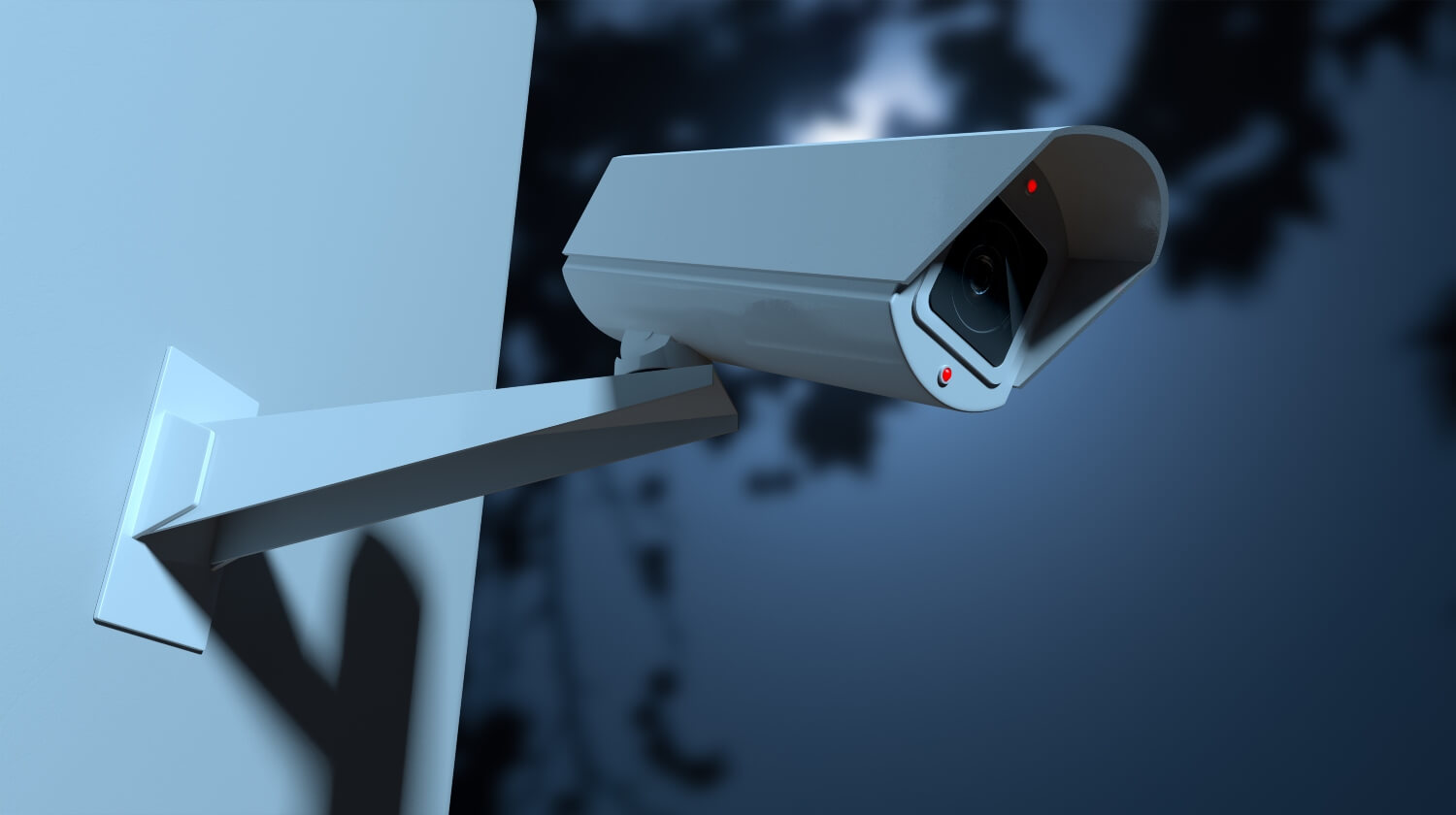
Here are the ranges and examples of what different tiers of service typically cost, both monthly and extrapolated to a yearly basis. Use these to benchmark what you might expect for your situation.
Basic Monitoring Packages
Cost: $30–$60/month
Features: Entry-level live video monitoring; may include only a couple of cameras, basic video quality, often motion detection without advanced analytics, and minimal operator involvement.
Yearly cost: ~$360–$720.
Example: A single-family home with 2-3 indoor/outdoor cameras, basic resolution, cloud recording, monitored only on demand or during certain hours.
Mid-Tier Monitoring Packages
Cost: $60–$150/month
Features: More cameras (4-8), 24/7 operator monitoring, improved video resolution (e.g., HD), some AI-driven alerts (e.g., motion zones, simple object detection), and possibly video verification of alarms.
Yearly cost: ~$720–$1,800.
Example: A retail location with six cameras, both inside & outside, requiring night coverage, operator alerting for suspected intrusion, and some analytical features.
Advanced Enterprise Packages
Cost: $200–$500+/month
Features: Large site(s), many cameras, high-definition or multi-sensor cameras, advanced AI (facial recognition, license plate detection, etc.), fast response times, integration with access control/alarm systems, voice deterrent or speaker systems, possibly multi-site central monitoring.
Yearly cost: approximately $2,400–$6,000+ (and often substantially more if multiple cameras or very high service levels are required).
Example: A large warehouse complex with multiple buildings, outdoor perimeters, integration with guard dispatch, live voice-down capabilities, and redundant systems.
Upfront Costs and Installation Fees
When planning live video monitoring, it’s helpful to consider the entire “startup” picture, not just the monthly service fee. Upfront costs include cameras, sensors, recorders, network hardware, installation labor, and any software licences needed to manage and store the video. These expenses are typically paid once, at the beginning, and form the baseline for your system.
- Hardware (cameras and sensors): Basic indoor cameras typically cost between $100 and $200 each. Weather-proof, pan-tilt-zoom or low-light models run $300–$500+. A small property with three or four mid-range cameras can expect to spend between $400 and $1,000 on equipment.
- Professional Installation: Running cables, mounting cameras, testing network connections, and configuring software is labor-intensive. Labor per camera averages $80–$200, depending on complexity. For a four-camera wired system, combined hardware and labor typically totals $594–$2,039.
- Software/Licensing Fees: Some vendors offer basic video management software. Advanced features like AI modules, cloud dashboards, or multi-site control may require a one-time license of $100–$2,500+.
Adding these together, homeowners and small businesses typically face a one-time setup bill of $500–$2,000, while large or complex properties may incur higher costs. Readers can use these ranges to plan budgets and request transparent, “all-in” quotes from vendors rather than piecemeal charges.
Additional Costs Homeowners and Businesses Should Expect
After the system is installed, ongoing costs become significant. Some are obvious monthly service fees, but others are hidden or optional add-ons that can significantly change your total cost of ownership. Understanding them in advance helps you compare providers on an apples-to-apples basis and avoid surprise invoices.
Cloud Storage and Video Retention
Most monitoring providers store footage off-site in the cloud. The longer you keep it, the more you pay. A basic plan with 7- to 30-day retention can be as little as $2.99 per camera per month, while high-resolution video kept for 90 days or more can reach $20–$25 per camera per month.
Tip: Match retention time to your actual needs. For example, many small shops only need 14-30 days to investigate incidents.
AI Analytics and Smart Features
Predictive AI, facial recognition, heat mapping, and people counting can reduce false alarms and improve security decisions, but they are usually priced as add-ons. Advanced analytics may add several dollars per camera per month to your subscription or require more expensive cameras with built-in processors, costing $300–$500 or more each.
Tip: Ask your vendor for a demo or trial to ensure the analytics you’re paying for genuinely add value.
Maintenance and Equipment Replacement
Even the best cameras need upkeep. Outdoor lenses must be cleaned, firmware updated, and hard drives in DVR/NVR units replaced every 2–5 years. Industry practice is to budget 5–15% of the initial hardware cost per year for maintenance and replacement. This prevents downtime and ensures your system remains compliant with insurance or regulatory standards.
Tip: Some providers bundle maintenance into a “managed service” contract at a fixed annual price.
Integration With Alarms and Access Control
Linking your video system to alarms, access cards, or intercoms adds security but also costs. Simple integrations may incur a one-time fee of $50 to $300. Complex projects spanning multiple buildings or requiring strict compliance (such as healthcare or finance) can run much higher. Eufy notes that extra integration work is frequently billed separately.
Tip: ask early whether integration is included in the quote or will be billed as a change order.
How Live Video Monitoring Saves Money in the Long Run?
Investing in live video monitoring makes sense not only as a security measure but as a long-term financial strategy. Over time, the system produces measurable returns on investment (ROI) through reduced losses, lower insurance costs, fewer paid guards, and legal protection.
Lower Insurance Premiums for Monitored Properties
Properties with quality-monitored video systems often receive a discount on their insurance premiums. Such discounts are offered because insurers view monitoring as a means of reducing the risk of theft, vandalism, and damage. Many homeowners’ insurance companies offer 2-10% savings for installing alarm systems or video surveillance with professional monitoring.
Monitored systems with alarms and surveillance can fetch higher discounts, 10-15%, for homes with comprehensive protection (including environmental sensors and motion detectors) from providers like Abode.
Some smart-home device packages (including security cameras) yield up to 20% discounts with certain insurers, depending on the state and device type.
Example: If your home insurance costs $2,000/year, a 10% discount saves you $200 annually. Over five years, that’s $1,000 toward the cost of cameras or monthly monitoring fees.
Reduced Theft, Vandalism, and Losses
For businesses, shrinkage (loss of inventory through theft or error) and vandalism represent real, ongoing cash drain. Live video monitoring helps detect losses earlier, acts as a deterrent, and reduces both frequency and severity of incidents. U.S. retailers reported a shrink rate of 1.6% of sales in FY 2022, up from approximately 1.4% in 2021, resulting in $112.1 billion in losses from theft, error, or fraud.
Businesses often see losses drop significantly after installing monitored video with analytics. If a shop with $500,000 in annual sales loses 1.6%, that’s $8,000 in shrinkage; monitoring that cuts shrinkage by half yields $4,000 in savings, enough to cover several months of a mid-tier monitoring plan.
Fewer On-Site Security Guards Required
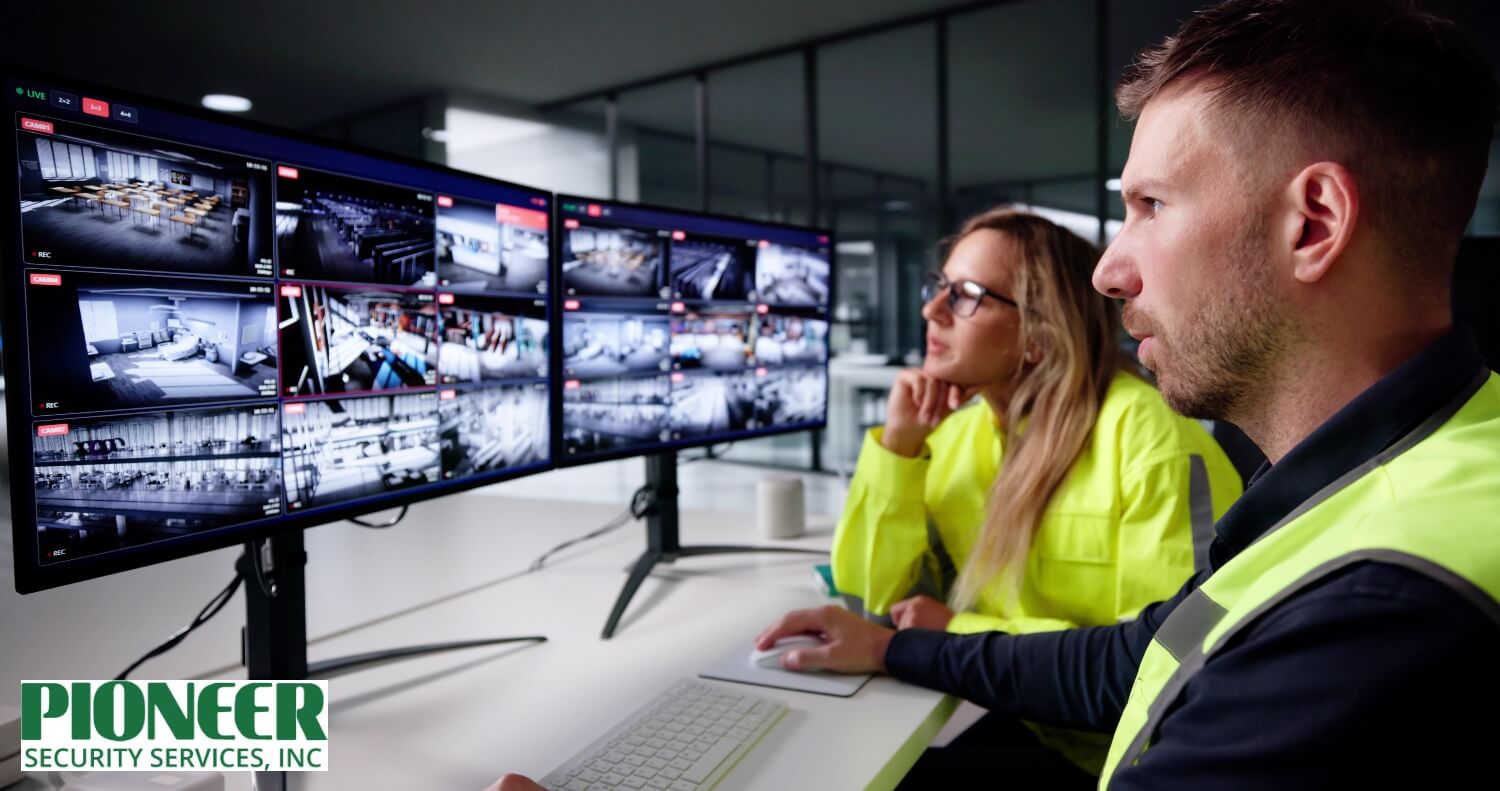
Physical security guards can be costly, especially when you require coverage at night, on weekends, or for large sites. Live video monitoring can either reduce the number of guards needed or eliminate some shifts, resulting in significant savings.
- A single full-time on-site guard, including wages, benefits, insurance, overtime, and related costs, can cost $3,000-$5,000/month (~$36,000-$60,000/year) depending on location, risk level, and hours.
- Remote video monitoring, even for a moderately sized facility (several cameras, AI alerts), often costs $100-$500/month.
Example: Suppose a business employs two guards at $4,000/month each ($8,000/month total). If video monitoring allows for eliminating one guard or activating guards only during peak hours, that could save $4,000/month. Even after paying monitoring fees for over a year, that’s nearly $48,000 in savings.
Protection Against Liability Claims and Lawsuits
Video recording provides time-stamped, objective evidence in cases of accidents, property damage, false claims, or disputes. This can reduce legal costs, payouts, and even insurance exposure. For example, slip-and-fall incidents at businesses often rely on witness statements; however, video evidence can disprove exaggerated claims or settle cases more quickly and affordably.
Having clear surveillance footage may reduce settlement or legal defense costs by tens of thousands of dollars, depending on the severity of the claim. Over time, these savings help offset setup costs, monthly monitoring, and maintenance, delivering net financial benefit for many types of properties.
Comparing Live Video Monitoring Costs to Alternatives
This section presents a side-by-side comparison of live monitoring versus traditional approaches, helping you identify the trade-offs and where money is saved or lost.
Live Monitoring vs Traditional Alarm Costs
Traditional alarm systems use sensors (such as door/window, motion, and glass-break), connect to central monitoring stations, and dispatch when triggers occur. They are cheaper initially but have limitations. The vast majority of alarm calls, ranging from 94 to 98 percent are false. In other words, the reliability of alarms is generally between 2 and 6 percent.
Cost: Basic alarm monitoring typically ranges from $20 to $50/month, with modest upfront hardware and installation costs.
Effectiveness: Alarms can sound and notify authorities, but they often lack visual verification. That means many false alarms, delays, or an inability to assess exactly what’s happening. Local fire alarms and smoke alarms typically offer a 2%-4% discount.
Live video monitoring adds the benefit of visual context, real-time video snapshots or streams, and the ability to verify whether an alarm is actual before dispatching. This reduces false alarm fines, improves response decisions, and reduces losses, justifying the higher monitoring cost for many businesses and homeowners seeking better protection.
Live Monitoring vs Security Guard Costs
Security guards have traditionally been relied upon for visible deterrence, rapid response, and the application of human judgment. However, they are more expensive over time and have vulnerabilities in consistency, coverage, and risk.
- Cost comparison: As noted, guards can cost $3,000 to $5,000/month each. Add in benefits, insurance, training, and uniforms.
- Remote video monitoring, even with multiple cameras and AI, typically costs $100 to $500/month, depending on the scale and features.
According to Monitex Security, companies that transition from guards to professional remote monitoring can reduce total security costs by 40-70%, while often improving or maintaining protection levels.
Example Scenario: A facility requiring three guards around the clock may spend $12,000 or more per month. Switching to live video monitoring could reduce that to $500-$1,500/month, depending on the features, saving many thousands of dollars each year, even considering equipment, monitoring, and maintenance.
Discover the True Value of Live Video Monitoring with Pioneer Security
Live video monitoring has emerged as one of the most effective and flexible methods for protecting homes and businesses. As our guide illustrates, monthly costs range from approximately $30 to $80 for residential properties to $100 to $500 or more for commercial and enterprise sites, depending on the number of cameras deployed, the level of risk, and the advanced features selected.
One-time setup expenses for cameras, sensors, installation, and software typically range from $500 to $2,000. Optional add-ons, such as extended cloud storage, AI analytics, or system integrations, can increase the total investment. When all of these factors are balanced against the benefits, live video monitoring consistently delivers a strong return on investment.
Lower insurance premiums, fewer losses from theft and vandalism, reduced reliance on on-site guards, and clear evidence to resolve liability claims all combine to offset, and often exceed, the initial outlay. Even small businesses can achieve payback in under two years by monitoring cuts, reducing shrinkage, and enhancing risk management.
Pioneer Security offers tailored live video monitoring packages designed to maximize protection and long-term savings. Contact our team today for a no-obligation quote and discover how affordable and effective professional monitoring can be for your home or business.
Frequently Asked Questions
How much does live video monitoring cost per month?
Residential systems usually cost $30–$80/month for a few cameras and basic video. Small businesses pay $100–$250/month for more cameras, 24/7 monitoring, and alert verification. Large commercial properties can range $200–$500+ per month for multiple sites, HD video, and advanced analytics.
What factors increase the price of monitoring?
Costs rise with more cameras, higher-resolution video, AI features, longer storage, and system integrations. High-risk or remote locations may also increase fees due to higher liability and monitoring requirements.
Is live monitoring worth the investment for small businesses?
Yes, many small businesses recover costs within 6–18 months. Monitoring reduces theft, false alarms, liability, and may provide insurance discounts, making it a cost-effective investment compared with potential losses.
Do insurance companies give discounts for monitoring?
Yes, insurers often provide 5–20% discounts for monitored systems, especially those with 24/7 coverage, integrated alarms, and fire detection. Even basic monitoring can lower premiums and help offset costs.
Are there hidden fees in monitoring contracts?
Hidden costs can include equipment, AI features, cloud storage overages, maintenance, and integration upgrades. Always ask providers for a complete breakdown to avoid surprises.
How do monitoring costs compare to hiring security guards?
Remote monitoring is far cheaper than on-site guards. A guard can cost $3,000–$5,000/month, while a monitored camera system ranges $100–$500/month. Monitoring provides broad coverage and verification, though guards are still needed for physical response.

